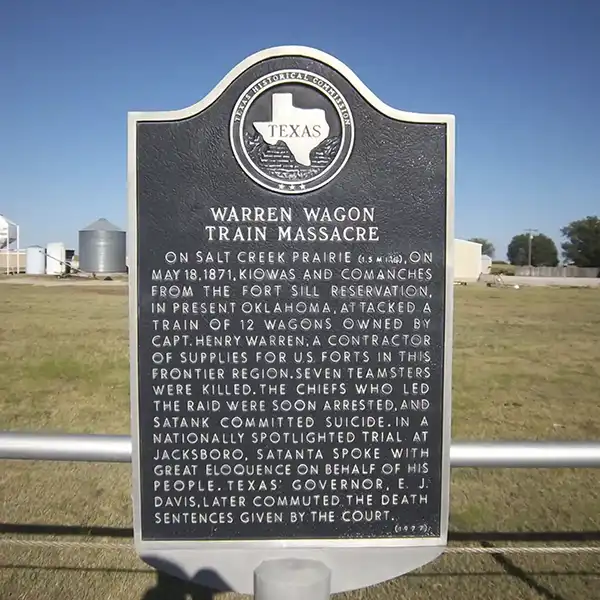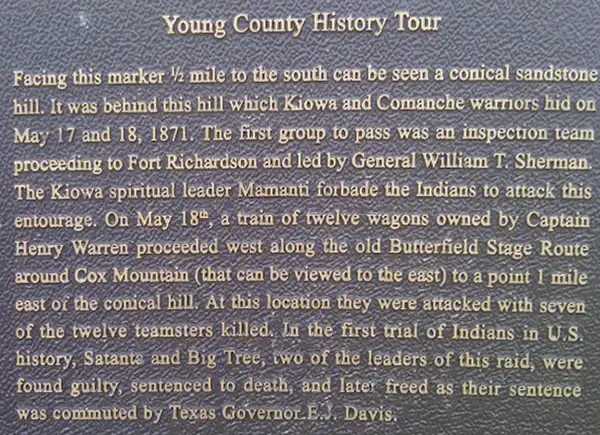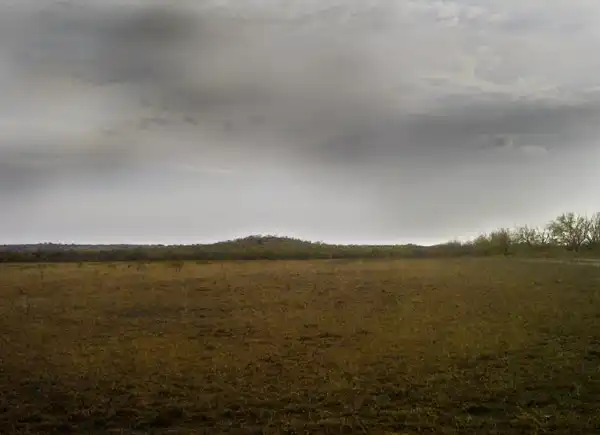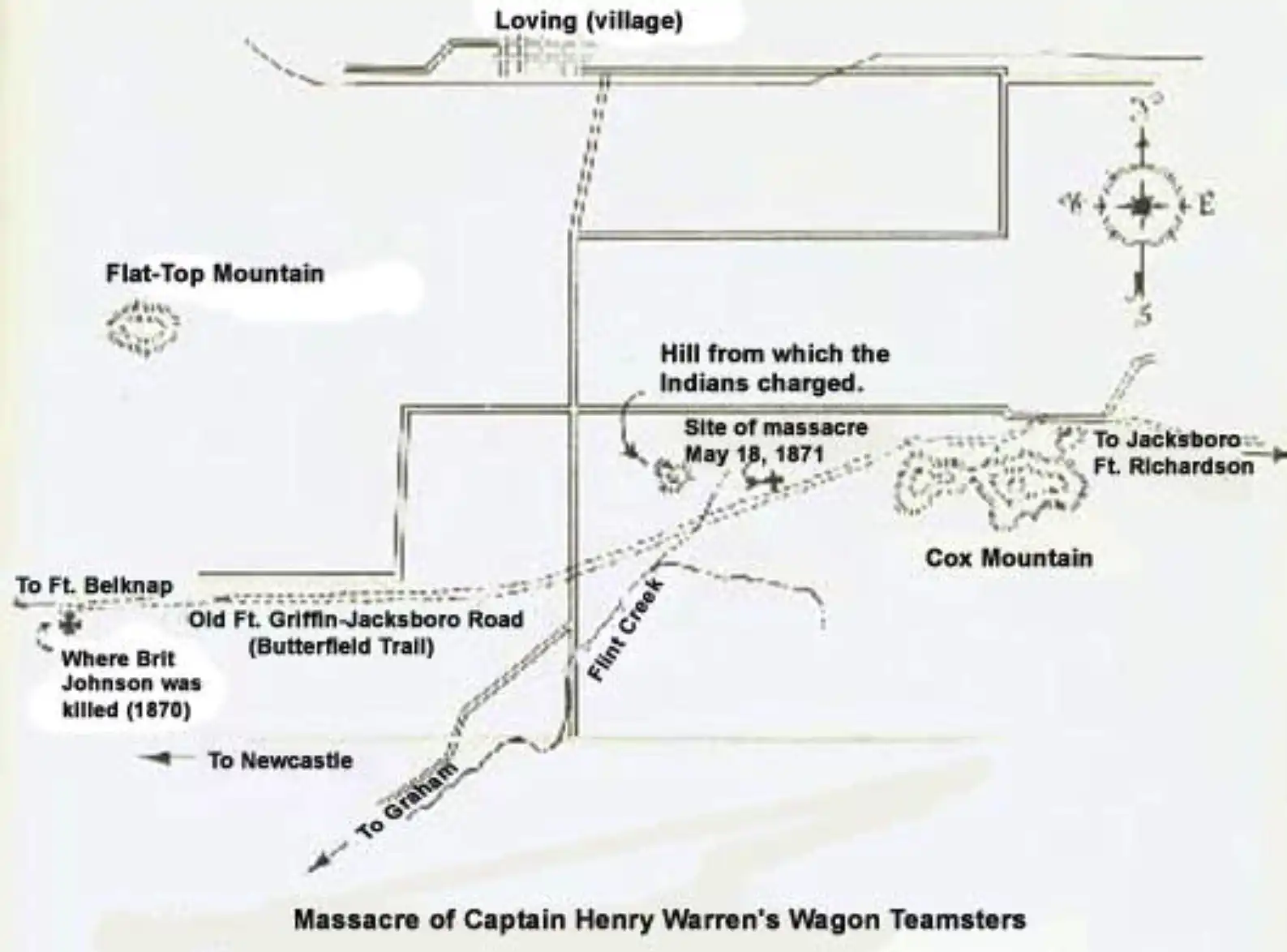The Warren Wagon Train Raid

On May 18, 1871, Kiowa and Comanche warriors from the Fort Sill Reservation attacked a train of 12 wagons owned by Captain Henry Warren.
Captain Henry Warren was a civilian contractor for the government, supplying U.S. Forts along the northwest frontier of Texas with supplies, flour, corn, and other commodities.
With the end of the Civil War, reconstruction had begun, but Fort Belknap and other military forts had not been reactivated by the US government, and the frontier had been overrun by Comanche and Kiowa, who were attempting to reclaim the area.


The Governor of Texas and many settlers had written letters and begged for assistance and relief, but the reports were not believed in Washington D.C. The Quaker peace movement was in power and President Grant and many others believed the reports of Indian depredations to be greatly exaggerated.
President Grant sent General William Tecumseh Sherman and Captain Randolph Marcy to investigate the reports. Sherman did not put much credence in the reports and demonstrated this belief by refusing a large escort through the area of attacks. Sherman and Marcy were accompanied by only a small detachment of approximately 15 soldiers from the 10th Cavalry.
Unknown to Sherman, the party of 150 to 200 Kiowa and Comanche led by Satanta, Satank, and Big Tree, three major chiefs of the Kiowa nation had watched the approach of his party and wanted to intercept it but had been told by their owl Prophet Mah-Man-Teh that if they waited, they would reap a greater reward soon.
Unaware that he was under observation, Sherman and his party encountered the Warren Wagon Train and spoke with them briefly on the trail before he continued east to Fort Richardson. The next morning survivors of the attack on the wagon train stumbled into camp and reported that less than an hour after Sherman had met with them on the trail, they were attacked and seven of the twelve teamsters were killed.
The attack made national headlines and Sherman realized how close he had come to being a casualty. He would locate the attackers at Fort Sill, who had returned and bragged about the raid. Satanta, Satank, and Big Tree were arrested and Satanta and Big Tree would survive to be the first Native American Chiefs to ever be tried for murder in a civilian court.
The United States policy would change from this point on, and Grant would have four different army units move into Indian territory to force the Indians onto reservations.
One unit commanded by Ranald Mackenzie would eventually force Quanah Parker to the reservation, and another unit, commanded by George Armstrong Custer would meet their fate in the Black Hills.
The events of May 18, 1871 in Young County would eventually contribute to some of the most prolific events in the history of the United States.


